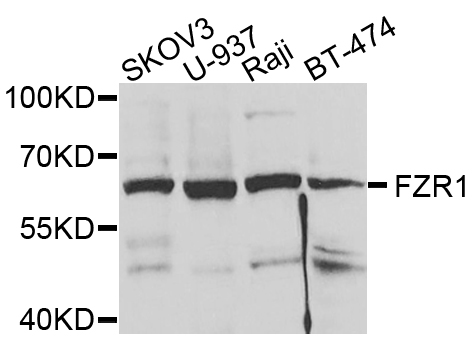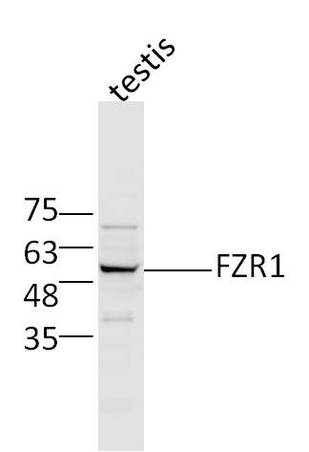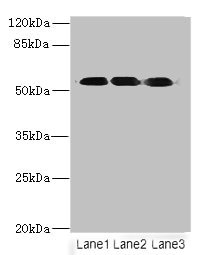FZR1 antibody
GTX111200
ApplicationsImmunoFluorescence, Western Blot, ImmunoCytoChemistry, ImmunoHistoChemistry, ImmunoHistoChemistry Paraffin
Product group Antibodies
TargetFZR1
Overview
- SupplierGeneTex
- Product NameFZR1 antibody
- Delivery Days Customer9
- Application Supplier NoteWB: 1:500-1:3000. ICC/IF: 1:100-1:1000. IHC-P: 1:100-1:1000. *Optimal dilutions/concentrations should be determined by the researcher.Not tested in other applications.
- ApplicationsImmunoFluorescence, Western Blot, ImmunoCytoChemistry, ImmunoHistoChemistry, ImmunoHistoChemistry Paraffin
- CertificationResearch Use Only
- ClonalityPolyclonal
- Concentration0.26 mg/ml
- ConjugateUnconjugated
- Gene ID51343
- Target nameFZR1
- Target descriptionfizzy and cell division cycle 20 related 1
- Target synonymsCDC20C, CDH1, DEE109, FZR, FZR2, HCDH, HCDH1, fizzy-related protein homolog, CDC20 homolog 1, CDC20-like 1b, CDC20-like protein 1, cdh1/Hct1 homolog, fizzy/cell division cycle 20 related 1
- HostRabbit
- IsotypeIgG
- Protein IDQ9UM11
- Protein NameFizzy-related protein homolog
- Scientific DescriptionKey regulator of ligase activity of the anaphase promoting complex/cyclosome (APC/C), which confers substrate specificity upon the complex. Associates with the APC/C in late mitosis, in replacement of CDC20, and activates the APC/C during anaphase and telophase. The APC/C remains active in degrading substrates to ensure that positive regulators of the cell cycle do not accumulate prematurely. At the G1/S transition FZR1 is phosphorylated, leading to its dissociation from the APC/C. Following DNA damage, it is required for the G2 DNA damage checkpoint: its dephosphorylation and reassociation with the APC/C leads to the ubiquitination of PLK1, preventing entry into mitosis.
- Storage Instruction-20°C or -80°C,2°C to 8°C
- UNSPSC12352203
References
- Wang T, Zou Y, Huang N, et al. CCDC84 Acetylation Oscillation Regulates Centrosome Duplication by Modulating HsSAS-6 Degradation. Cell Rep. 2019,29(7):2078-2091.e5. doi: 10.1016/j.celrep.2019.10.028Read this paper







